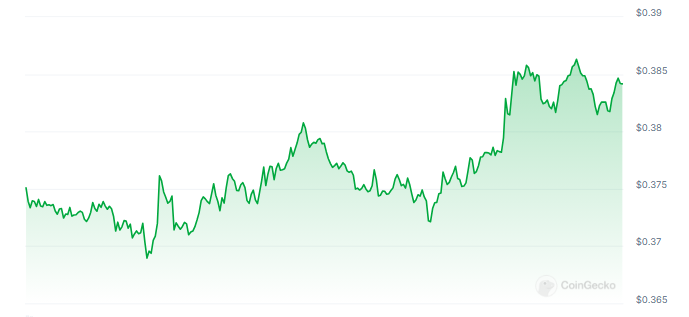On-chain governance marks a significant turning point for Cardano, the proof-of-stake blockchain famed for its painstaking development process. By means of voting on suggestions, this creative mechanism enables ADA holders to directly shape the future of the platform.
Voting For The Future
Maintaining competitiveness in the fast changing blockchain scene of today calls both agility. For Cardano, on-chain governance offers to simplify the decision-making process. Emphasising this point, Cardano’s founder, Charles Hoskinson, says that on-chain voting lets “quick improvements ensure the system remains competitive and relevant.”
This efficiency goes beyond simply technological changes. Cardano sees on-chain governance influencing everything from branding to marketing campaigns to even research financing. Imagine ADA holders casting votes on ideas to fund distributed security projects or support blockchain education initiatives.
BREAKING: A major release of the Cardano node is published! Node 9.0.0 hard fork (Chang) pic.twitter.com/JfnvNqpiaZ
— Cardano Feed ($ADA) (@CardanoFeed) July 8, 2024
Creating Consensus In A Global Village
Putting such a system into use is no simple task. Getting agreement among a geographically scattered and diversified group is rather difficult. Cardano faced this squarely with a two-year development effort ending in SIP 1694, appropriately called after the Enlightenment thinker Voltaire.
SIP 1694 is a framework meant to reach a “governance trilemma,” a balance between efficiency, effectiveness, and high integrity, not only a suggestion. Hoskinson notes the challenge of this balancing but shows hope SIP 1694 will provide a workable answer.
Cardano: Constitution For The Digital Age
Cardano’s method of on-chain control transcends mere voting. The platform is pioneering a blockchain constitution — a set of basic rights exclusive to Cardano ecosystem members and distributed apps (dApps). Acting as a fundamental layer for governance, this paper guarantees a fair and open surroundings for all the players.
The method also combines flexibility and a special mix of representation. Motivated by the idea of a constitutional republic, Cardano combines elected officials with a “liquid democracy” paradigm. This lets ADA holders assign their voting rights to reliable people (dReps) while yet being free to undo that delegation at any moment. This dynamic approach honours the need of experience on difficult problems and supports unique viewpoints.
Voting Rights And Beyond
The paper honours Cardano’s creative approach, but it’s crucial to recognise the possible difficulties ahead. Effective on-chain governance might be hampered by voter indifference, the effect of big token holders, and the complexity of voting on technical ideas.
But Cardano’s focus on community involvement via seminars and intensive testing points to a dedication to reduce these hazards. The blockchain industry is keenly observing as Cardano is ready to release its final node version and turn on-chain governance active. The triumph of this ambitious effort may open the path for a new age of blockchain community-driven decision-making.

Cardano (ADA) was trading at $0.38 at the time of writing, a little increase of 2.5% over the past 24 hours. Still, over the previous week the token price dropped 7.3%. Although the short-term price movement is not anticipated to be directly related to the forthcoming governance rollout, some experts believe that effective execution might inspire fresh investor confidence and a possible price rise over time.
Featured image from singapore, chart from TradingView






